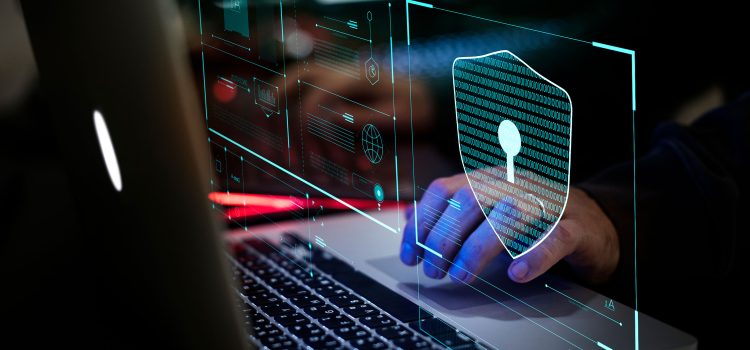
The increasing digitization of the modern world has expanded the attack surface for cyber threats, making cybersecurity a critical concern for organizations across all sectors. With the rapid evolution of technology, cybercriminals have adopted sophisticated methods to exploit vulnerabilities, disrupt operations, and steal sensitive data. This article explores the most pressing cybersecurity threats of 2024, offering insights, case studies, and practical strategies to safeguard against these risks.
1. Rising Threat of Spear-Phishing Attacks

Spear-phishing remains one of the most prevalent forms of cyberattacks. Unlike generic phishing, spear-phishing involves highly targeted and personalized attempts to trick individuals into divulging sensitive information or executing malicious files.
The Threat
In a recent campaign highlighted by the Cybersecurity and Infrastructure Security Agency (CISA), attackers used malicious Remote Desktop Protocol (RDP) files. These files were distributed via phishing emails to infiltrate organizations’ networks, enabling the deployment of persistent malware
Case Study
In a notable incident, a mid-sized healthcare organization fell victim to spear-phishing. Employees received emails that appeared to originate from a trusted medical software vendor. Opening the malicious attachments granted attackers access to patient records, resulting in reputational damage and regulatory fines.
Mitigation Strategies
- Educate Employees: Regular training on recognizing phishing emails is essential.
- Enhance Authentication: Adopt phishing-resistant MFA, such as biometric or hardware-based tokens.
- Restrict RDP Use: Limit RDP access and monitor its usage to reduce potential exposure.
Benefits
Implementing these measures reduces the likelihood of successful phishing attacks, ensuring data security and business continuity.
2. AI in Cybercrime: A Double-Edged Sword
Artificial intelligence (AI) is reshaping cybersecurity. While AI is a powerful tool for defense, cybercriminals have also adopted it to enhance their operations.
The Threat
AI is being used to create convincing deepfake videos, automate the development of malware, and identify system vulnerabilities. For instance, attackers have leveraged AI to craft highly persuasive phishing emails that bypass traditional detection systems
Example
In a high-profile case, deepfake technology was used to impersonate a CEO during a video call. Employees, convinced they were speaking with their leader, transferred $250,000 to a fraudulent account.
Countermeasures
- Deploy AI-Based Security Tools: Use AI for intrusion detection and anomaly analysis.
- Improve Employee Awareness: Train staff to recognize deepfakes and other AI-driven scams.
- Invest in Verification Systems: Implement voice and video authentication protocols to verify the authenticity of communications.
Benefits
By harnessing AI for defense, organizations can stay ahead of cybercriminals who exploit the same technology, creating a robust security posture.
3. IoT Device Vulnerabilities: A Growing Concern
The proliferation of Internet of Things (IoT) devices has introduced new vulnerabilities. These devices, often with weak security protocols, are attractive targets for cybercriminals.
The Threat
A 400% increase in IoT malware attacks was reported in 2023, with manufacturing being the most targeted sector. Compromised IoT devices can be used to launch distributed denial-of-service (DDoS) attacks or act as entry points into broader networks.
Case Study
A smart manufacturing company suffered a significant breach when attackers exploited vulnerabilities in its IoT-enabled machinery. The incident disrupted production lines, resulting in millions of dollars in losses.
Mitigation Strategies
- Secure IoT Devices: Change default credentials, update firmware regularly, and disable unnecessary features.
- Network Segmentation: Isolate IoT devices from critical systems to minimize potential damage.
- Continuous Monitoring: Implement tools to monitor IoT devices for suspicious activity.
Benefits
Enhancing IoT security safeguards critical operations, reducing downtime and protecting sensitive data.
4. Ransomware: A Persistent and Evolving Threat
Ransomware continues to dominate the cybersecurity landscape. Attackers deploy malicious software to encrypt data, demanding payment for its release.
The Threat
Approximately 66% of organizations experienced ransomware attacks in 2023. Attackers are now using “double extortion” tactics, threatening to release sensitive data if the ransom is not paid.
Example
In 2024, a global logistics company was targeted by ransomware. Despite having backups, the threat of exposing confidential client data forced the company to pay a $5 million ransom.
Mitigation Strategies
- Regular Backups: Maintain offline backups to ensure data recovery without paying a ransom.
- Implement Zero Trust Architecture: Restrict access based on verification to minimize the attack surface.
- Incident Response Plans: Develop and test plans to respond swiftly to ransomware attacks.
Benefits
By reducing the effectiveness of ransomware tactics, organizations can avoid financial losses and protect their reputations.
5. Third-Party and Supply Chain Risks

As organizations increasingly rely on third-party vendors, the security of their partners becomes a critical concern.
The Threat
Cybercriminals exploit weak links in the supply chain to infiltrate larger organizations. A recent report revealed that third-party vulnerabilities accounted for 44.7% of data breaches
Case Study
In the SolarWinds attack, hackers compromised a third-party IT management tool, affecting thousands of clients, including government agencies and Fortune 500 companies.
Mitigation Strategies
- Vendor Risk Assessments: Evaluate the cybersecurity posture of all vendors.
- Secure Integrations: Use encrypted communications and authentication protocols for third-party connections.
- Contractual Obligations: Include cybersecurity requirements in vendor agreements.
Benefits
Strengthening third-party security reduces indirect risks and enhances overall resilience.
6. DNS Tunneling and Configuration Errors
DNS tunneling exploits the Domain Name System (DNS) to exfiltrate data or establish command-and-control communication.
The Threat
Attackers use DNS tunneling to bypass firewalls and other security measures. Misconfigurations, such as exposed cloud storage, further exacerbate these risks
Example
A retail chain suffered a breach when attackers used DNS tunneling to extract customer payment data. The misconfiguration of their cloud firewall allowed the attackers undetected access.
Countermeasures
- Monitor DNS Traffic: Use tools to identify anomalies in DNS requests.
- Regular Audits: Conduct routine checks to identify and correct misconfigurations.
- Least Privilege Access: Limit access to sensitive configurations.
Benefits
By addressing configuration errors and monitoring DNS activity, organizations can thwart complex attacks.
7. Emergence of Deepfakes
Deepfake technology poses risks in fraud, misinformation, and corporate espionage.
The Threat
Realistic video and audio deepfakes are used to impersonate individuals, undermining trust and facilitating financial fraud
Example
A European bank reported a case where deepfake audio was used to mimic an executive’s voice, tricking employees into authorizing a $35 million transfer.
Countermeasures
- Deepfake Detection Tools: Invest in AI systems to identify manipulated media.
- Employee Training: Raise awareness about deepfake scams.
- Authentication Protocols: Use multiple verification methods for high-stakes communications.
Benefits
Early detection and awareness of deepfakes can prevent financial losses and reputational damage.
Conclusion
The cybersecurity threats of 2024 underscore the importance of vigilance, innovation, and collaboration. From spear-phishing and AI-powered attacks to IoT vulnerabilities and ransomware, organizations must adopt comprehensive strategies to protect their assets. By educating employees, leveraging advanced technologies, and implementing robust security measures, businesses can navigate the complex threat landscape and emerge more resilient than ever.










